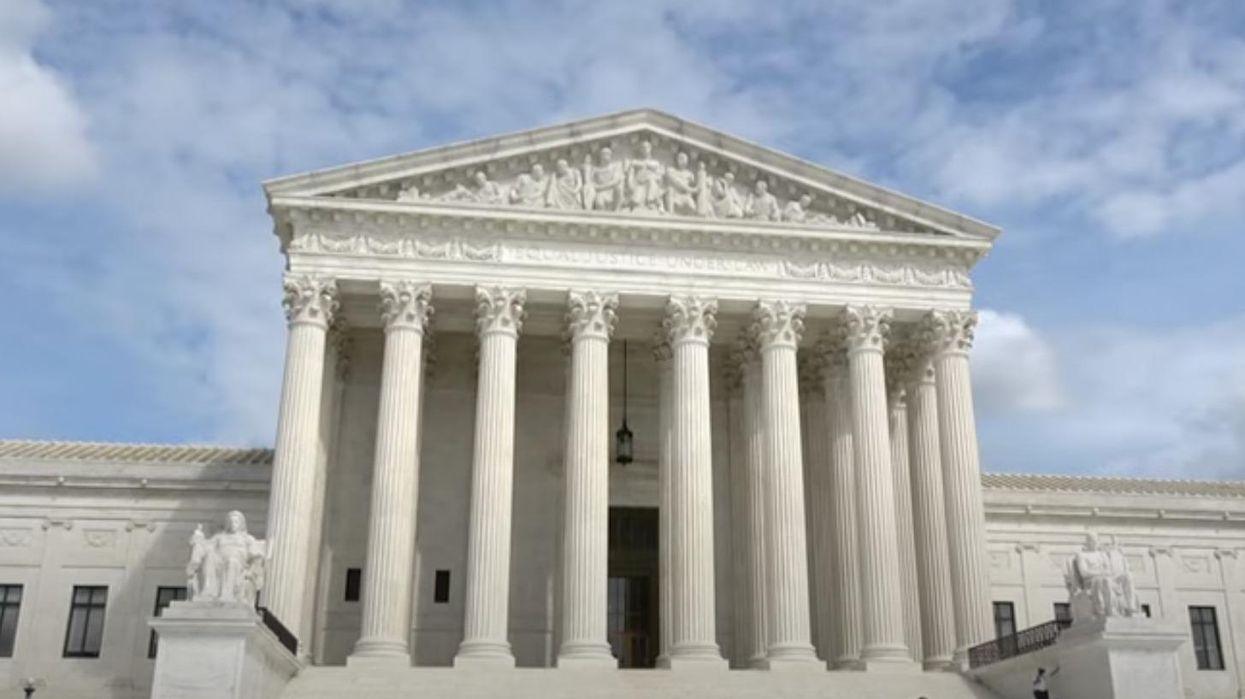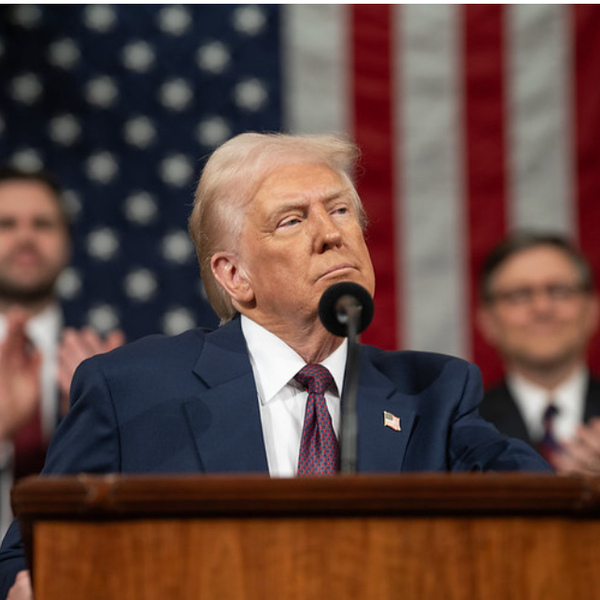How The Midterm Elections Unleashed The Supreme Court's Radical Majority

The U.S. Supreme Court
The Democrats beat both the historical odds and the pundits’ expectations in the midterm elections. But when the dust settles, it’s likely that only one national institution—the Supreme Court—will have unobstructed power for the next two years, and the question will be how the six Republicans who control the Court decide to use their power.
Before the election, many Democrats were resigned to the loss of Congress as an unavoidable repeat of a well-established midterm pattern. Some may have agreed with one liberal commentator, Gene Lyons, who wrote in late October that midterm elections “just don’t matter a whole lot in terms of serious changes in the body politic. The U.S. Constitution is pretty much set up to prevent it.”
Any Democrat who shared that confidence about the inconsequentiality of losing Congress might not have even bothered to vote. But, contrary to Lyons, the Constitution does not preclude “serious changes” in a divided government. If Republicans end up with even a slim House majority, the impact is going to be considerable, especially because that majority will hinge on the most extreme members of the Republican caucus. When the party controlling even one chamber is willing to risk the failure of government because it sees in that failure not just partisan advantage but confirmation of its whole philosophy, it has a formidable club over the opposition party that believes in government and is trying to make it work.
Deadlock between the legislature and executive also leaves the path open for the controlling majority in the third branch of government to pursue its own agenda. This is the big effect of the midterms that hasn’t yet registered widely. Despite the backlash against the Supreme Court’s decision to overturn Roe v. Wade, the Court’s right-wing majority came out of the election as the least-obstructed branch.
The old line that the Supreme Court “follows the election returns” still probably has some truth in it, and there is no question that Democratic candidates benefited from the Court’s abortion decision. But as good as the election was for Democrats, it almost certainly did not dissuade the conservative justices from proceeding on a long and ambitious agenda to undo the legal foundations of liberal government. This is their moment to entrench their legal principles and partisan preferences.
In the Court’s reversal of Roe, Justice Clarence Thomas signaled that the same logic the majority used in that decision could be its basis for overturning Obergefell v. Hodges, which established a constitutional right to same-sex marriage. The two cases are similar in another respect. In both instances, a Democratic-controlled Congress could respond to the Court by passing legislation to protect the same rights. In its lame-duck session, the current Congress could secure those rights, but once the new Congress takes office in January, it’s unlikely that will still be a possibility.
The threat of congressional repudiation will also probably be off the table in a much wider range of cases where the Supreme Court bases its ruling on its interpretation of statutes. Whenever the Court interprets a law one way, Congress can respond by passing new legislation that makes it unambiguously clear that it intends something else. From 1967 to 2011, according to a study by Matthew Christiansen and William N. Eskridge, Congress overrode Supreme Court statutory decisions 275 times. Earlier this year, the Democratic congressional majority did that again in response to the Court’s 2022 decision in West Virginia v. EPA. After the Court overturned the Environmental Protection Agency’s rules on greenhouse emissions on the grounds that the 1970 Clean Air Act had not specifically given the agency that authority, Democrats used the Inflation Reduction Act to declare that the Clean Air Act did cover greenhouse gases.
Deadlock between the legislature and executive leaves the path open for the controlling majority in the third branch of government to pursue its own agenda.
Although Democrats won on that crucial specific point, they were not able to address a more fundamental question raised by the Court in West Virginia v. EPA. Under the “Chevron rule”—a basic tenet of administrative law since its adoption by the Court in 1984—judges have accepted “reasonable” administrative interpretations of law when Congress, in the Court’s words, “has not directly addressed the precise questions at issue.” As the legal scholar Cass Sunstein writes, “The Chevron principle means that in the face of ambiguity, agency interpretations will prevail so long as they are ‘reasonable.’”
In West Virginia v. EPA, however, without directly overruling Chevron, the Court for the first time followed another principle, the “major questions doctrine,” which holds that if an agency is making a “major” policy decision when the law is ambiguous, the Court should strike down that decision and, in effect, tell Congress and the president to pass a new law if they can agree on it.
Except, of course, when Congress and the presidency are divided, they often cannot pass a new law.
The Chevron rule is an expression of judicial humility, a rule that defers to the specialized knowledge of an administrative agency and recognizes that effective government requires the flexibility to update rules with new knowledge, such as the knowledge about the dangers of greenhouse emissions that was not available in 1970. The vagueness of the major questions doctrine enables the Court to set itself up as a super-executive, overturning agency decisions in the knowledge that Congress and the president will often be too divided to do anything about it.
A case argued before the Court on Election Day, Health and Hospital Corporation of Marion County v. Talevski, illustrates how the likely inability of Democrats to override the Court may result in the loss of long-established rights. Talevski threatens to prevent the nation’s 82 million Medicaid beneficiaries from bringing suits in federal courts to secure their rights under the program. The case arises from a suit on behalf of a nursing home patient whose family accuses an Indiana health system and a private management company of violating Medicaid rules barring negligent treatment (in this case, the use of psychotropic drugs when those drugs don’t serve a legitimate medical purpose). The defendants say that no patient has the right to sue to enforce Medicaid’s rules.
For half a century, courts have upheld the right of Medicaid beneficiaries to sue in federal court under the Civil Rights Act of 1871, which gives people the ability to seek redress when states violate rights that federal law grants. The Indiana nursing home providers say the Medicaid law is not the sort of law that Congress had in mind in 1871. As Sara Rosenbaum, professor of health law and policy at George Washington University, notes, if the Court overturns the right of Medicaid beneficiaries to sue to enforce their rights, it could “implicate the entire constellation of state-administered public welfare programs, including Supplemental Nutrition Assistance Program (SNAP, formerly known as food stamps), child welfare, and federal public housing benefits.”
The federal government lacks the tools to enforce those rights, and nothing would effectively stand in the way of states arbitrarily denying coverage to eligible beneficiaries or failing to enforce federal requirements such as those concerned with the quality of medical care. Although the federal government could hypothetically cut its funding to a state, that would only further jeopardize beneficiaries’ health and well-being. As Rosenbaum points out, federal officials cannot do what a court can do: “immediately order state officials to stop violating the law.” Federal administrative powers are “not designed to achieve rapid, targeted solutions.”
This is the precisely the kind of situation where a Congress controlled by Democrats could override the Court. They could pass legislation that made the legal rights of beneficiaries unambiguously clear.
But when the Court bases a ruling on the Constitution, Congress does not have the same power that it has when judges interpret statutes. The most dangerous decision the Court may make this term concerns an interpretation of the Constitution that could limit the accountability of state legislatures regarding the rules they make for federal elections, including how they draw congressional district lines. Three years ago, in the 2019 case Rucho v. Common Cause, the Court ruled that the federal courts could do nothing about partisan gerrymandering of congressional districts, but it said that in gerrymandering cases “state statutes and state constitutions can provide standards and guidance for state courts to apply.” Now the Court’s right wing is poised to eliminate that check on partisan power over elections too.
Following the Court’s guidelines in Rucho, the North Carolina State Supreme Court in 2022 struck down the Republican-controlled legislature’s congressional redistricting plan on the grounds that it created an unfair partisan advantage that violated North Carolina’s state constitution. In a case to be heard by the U.S. Supreme Court in December, North Carolina Republicans argue that the state court’s action should be struck down under the so-called “independent state legislature doctrine,” which holds that under the U.S. Constitution state legislatures have the plenary and exclusive power to set federal election rules and choose presidential electors, unfettered by state constitutions and courts, state election officials, or any other body.
With Justice Amy Coney Barrett on the Court, Republicans may now have a majority in support of the independent state legislature doctrine, though much may still depend on how they craft their decision. A broadly drawn ruling could put legislative decisions about voting requirements and presidential electors as well as redistricting beyond the reach of a governor’s veto or a state’s highest court. As the conservative former federal judge J. Michael Luttig wrote earlier this year, the Court’s ruling could enable Republicans to accomplish legally what Donald Trump was unable to accomplish illegally after the 2020 presidential election—reversing the choice of the voters.
The implications go beyond 2024. If the Court bars state courts from overturning state legislatures’ rules on federal elections (after earlier barring federal courts from overturning partisan gerrymandering), it will have effectively freed state legislatures from any constitutional oversight on redistricting for purposes of partisan entrenchment.
So forget what you learned in civics about checks and balances. The midterm election did work out better for Democrats than the polls predicted, but for the next two years the power over major issues of national consequence will rest with a conservative majority on the Court that is unchecked itself and bent on reducing other checks on arbitrary power. At least with their decision to overturn Roe, the Court’s majority awakened the public to the danger. But, except for a possible reversal of Obergefell, it will be harder to arouse that kind of response to many of the other critical turns to the right the Court may take. This is going to be a major challenge for both journalism and Democratic politics in the coming years.
Reprinted with permission from Prospect.
- How White Supremacy Returned to Mainstream Politics - Center for ... ›
- Inside Dems' plan if Roe falls: A voter turnout blitz - POLITICO ›
- The Effects of Shelby County v. Holder | Brennan Center for Justice ›
- Democratic outrage, calls for legislation follow leak of draft decision ... ›
- Donald Trump energizes South Texas voters ahead of early voting ... ›
- Nancy Pelosi blasted Supreme Court decision on Roe, Mitch ... ›
- We Can't Depend on This Supreme Court To Save Our Democracy ... ›








